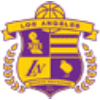The NBA did a tremendous job organizing and carrying out the Orlando bubble experiment that allowed the 2019-20 season to resume and led to the Los Angeles Lakers claiming their 17th championship in franchise history.
But the league now has to make a series of tough decisions on the format and scheduling of the 2020-21 season which, considering the worsening coronavirus (COVID-19) situation in America, could prove just as daunting a task.
Earlier reports suggested the new target date for the return of NBA basketball is around Christmas Day of this year. But just as with setting up the Walt Disney World campus, trade-offs will be necessary to accommodate safety protocols, comply with the dates of next year’s Olympic Games, and successfully restart the competition.
And according to ESPN’s Adrian Wojnarowski and Brian Windhorst, the 2021 All-Star Game could be the victim of the organizational headache the pandemic has caused the NBA this year:
Amid the coronavirus pandemic, the NBA is proposing several changes to next season that includes a 72-game regular season, a play-in tournament and the likelihood of no All-Star Game and All-Star Weekend in Indianapolis, sources said. The league is considering a two-week break at the midway point of the season, sources said.
NBA All-Star Weekend has not been canceled since 1999, when that season’s lockout cut the number of games played to 50. The league only restarted in late January, making it impossible to organize the traditional basketball event at the First Union Center in Philadelphia as planned.
The proposal differs from the plans commissioner Adam Silver presented last month. Silver previously stated he was aiming for a “standard” league format with an 82-game regular season and playoffs. He also said he hoped the games were played in home arenas and in front of fans.
Silver: Rapid testing key to having fans inside home arenas
Due to the contagious nature of the coronavirus (COVID-19), hosting fans in the stands has been a major problem for every sports league. However, the NFL has introduced safety protocols that allowed the teams to let spectators inside their arenas, although at a heavily reduced capacity.
The development of rapid testing systems has provided a major boost for the sports industry and prompted certain leagues, such as college conferences, to bring the competitions back sooner than expected.
And Silver thinks that rapid testing could be key to letting NBA fans back in the home arenas. “I’m hopeful that as we continue to study advancements in testing that, for example, rapid testing could make a big difference in terms of our ability to potentially get fans in buildings,” he recently said.
Have you subscribed to our YouTube channel? It’s the best way to watch player interviews, exclusive coverage from events, participate in live shows, and more!





